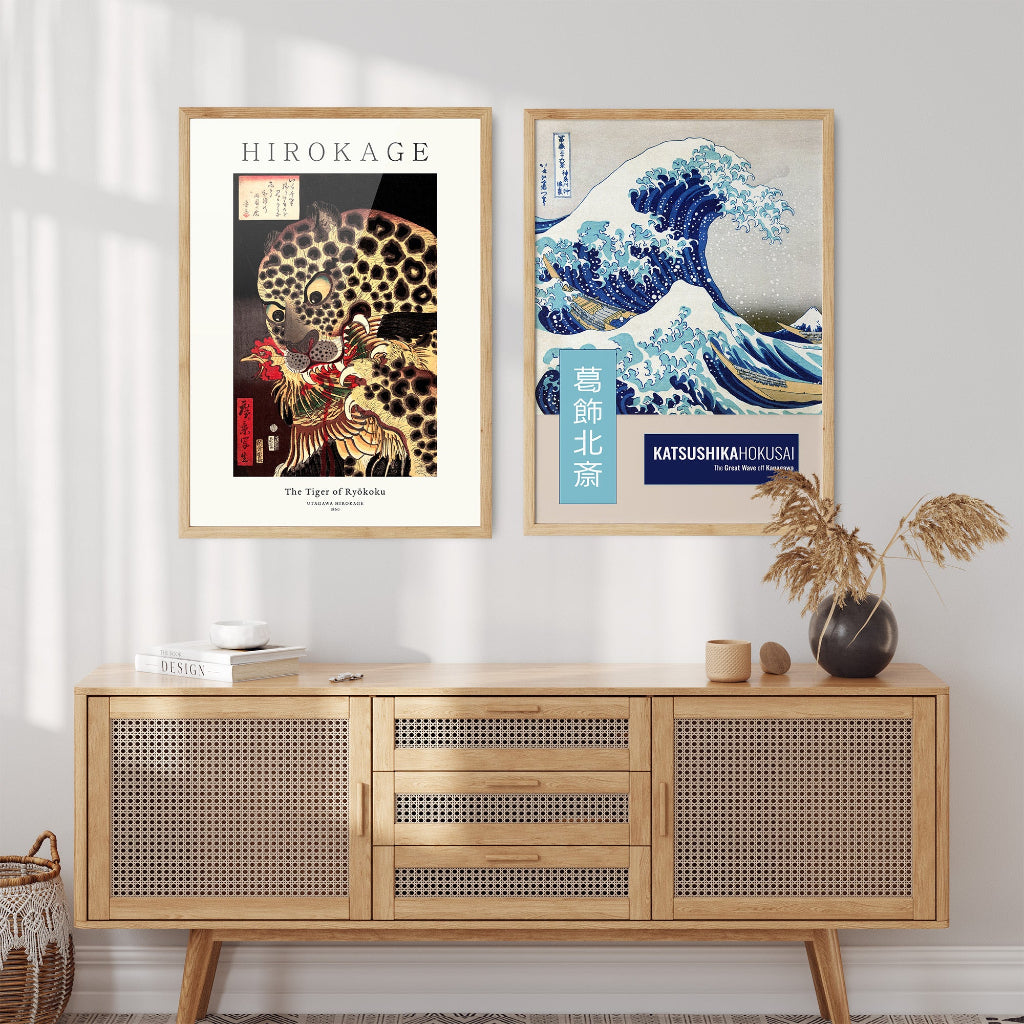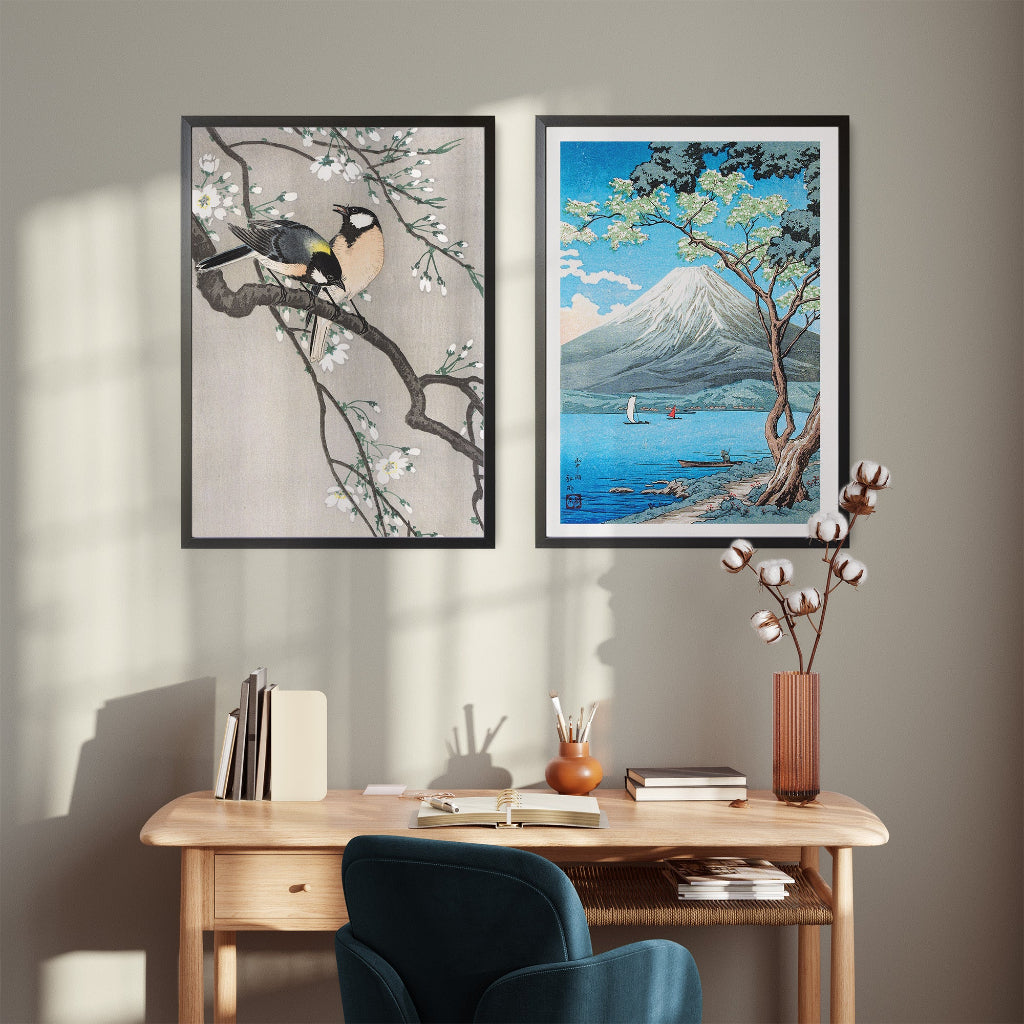Kawasaki Kyosen
Kawasaki Kyosen

Kawasaki Kyosen (1877–1942) was a Japanese painter and print designer active during the Meiji, Taishō, and early Shōwa periods. While perhaps not as internationally renowned as some of his Ukiyo-e predecessors or Shin-Hanga contemporaries, Kyosen made notable contributions, particularly in the realm of kuchi-e (literally 'mouth pictures'), which were woodblock-printed frontispieces for popular novels, literary magazines, and even sheet music.
Born in Kyoto, Kyosen studied traditional Japanese painting under several masters, including Bज्ञानrō Unsō. He developed a style that was both rooted in traditional aesthetics and adaptable to the illustrative needs of the publishing industry of his time. Kuchi-e prints were an important part of Japanese visual culture in the late 19th and early 20th centuries. They provided an attractive visual entry point to literary works and often depicted scenes from the stories, historical events, or idealized figures, especially beautiful women (bijin-ga). Kyosen was a skilled designer of kuchi-e, creating many charming and evocative images. His style in these prints often featured delicate lines, soft colors, and a gentle, sometimes romantic or nostalgic, atmosphere.
Beyond kuchi-e . . . Read More >>

Kawasaki Kyosen (1877–1942) was a Japanese painter and print designer active during the Meiji, Taishō, and early Shōwa periods. While perhaps not as internationally renowned as some of his Ukiyo-e predecessors or Shin-Hanga contemporaries, Kyosen made notable contributions, particularly in the realm of kuchi-e (literally 'mouth pictures'), which were woodblock-printed frontispieces for popular novels, literary magazines, and even sheet music.
Born in Kyoto, Kyosen studied traditional Japanese painting under several masters, including Bज्ञानrō Unsō. He developed a style that was both rooted in traditional aesthetics and adaptable to the illustrative needs of the publishing industry of his time. Kuchi-e prints were an important part of Japanese visual culture in the late 19th and early 20th centuries. They provided an attractive visual entry point to literary works and often depicted scenes from the stories, historical events, or idealized figures, especially beautiful women (bijin-ga). Kyosen was a skilled designer of kuchi-e, creating many charming and evocative images. His style in these prints often featured delicate lines, soft colors, and a gentle, sometimes romantic or nostalgic, atmosphere.
Beyond kuchi-e, Kawasaki Kyosen is also known for his interest in and depictions of traditional Japanese toys and folk crafts (kyōdo gangu). He produced illustrated books and prints on this subject, such as 'Kyōdo Gangu Shū' (Collection of Local Toys). These works show his appreciation for the simple beauty and cultural significance of these everyday objects, helping to preserve a record of them. His depictions of toys are often characterized by a playful quality and careful attention to detail.
He was a contemporary of other artists involved in kuchi-e production, like Takeuchi Keishū and Mizuno Toshikata. The kuchi-e genre itself represented a bridge between traditional Ukiyo-e printmaking and modern publishing. Kyosen's work in this area made art accessible to a wide audience through affordable publications. His focus on folk toys also aligns with a broader interest in mingei (folk art) that was developing in Japan during the Taishō period, although the formal Mingei movement was spearheaded by figures like Yanagi Sōetsu slightly later.
Kawasaki Kyosen's legacy lies in his contribution to popular visual culture through his kuchi-e and his charming documentation of Japanese folk traditions. His works are valued for their artistic merit and as reflections of the cultural tastes and interests of early 20th-century Japan.
<< Read LessDelve into the charming and often whimsical world of Kawasaki Kyosen, an artist active in the early to mid-20th century, known for his contributions to kuchi-e (frontispiece illustrations for books and magazines) and his delightful depictions of traditional Japanese toys and folk crafts. Kyosen's work often showcases a playful and nostalgic quality, capturing the intricate details and cultural significance of these objects. His art provides a unique glimpse into Japanese popular culture and the beauty found in everyday items and traditional craftsmanship. Add a touch of nostalgic charm and artistic appreciation for Japanese folk art to your collection.
Filters
Kyosen’s Collected Illustrations of Japanese Toys Nr. 76 ("Ancient Folk Toy Art")
Kyosen’s Collected Illustrations of Japanese Toys Nr. 75 ("Avian Gathering")
Kyosen’s Collected Illustrations of Japanese Toys Nr. 74 ("Yin and Yang Japanese Masks")
Kyosen’s Collected Illustrations of Japanese Toys Nr. 73 ("Eastern Folk Toys")
Kyosen’s Collected Illustrations of Japanese Toys Nr. 72 ("Fortune Folk Treasures")
Kyosen’s Collected Illustrations of Japanese Toys Nr. 71 ("Whimsical Lantern Bunny")
Kyosen’s Collected Illustrations of Japanese Toys Nr. 70 ("Traditional Warrior Performer Toys")
Kyosen’s Collected Illustrations of Japanese Toys Nr. 69 ("Cherry Blossom Dreams")
Kyosen’s Collected Illustrations of Japanese Toys Nr. 68 ("Carp atop Blue‐Horn Ox")
Kyosen’s Collected Illustrations of Japanese Toys Nr. 67 ("Rooster & Keeper Ensemble")
Kyosen’s Collected Illustrations of Japanese Toys Nr. 66 ("Blushing Twin Paper Dolls")
Kyosen’s Collected Illustrations of Japanese Toys Nr. 65 ("Ancient Temple Guardian")
Kyosen’s Collected Illustrations of Japanese Toys Nr. 64 ("Japanese Mousetrap Game")
Kyosen’s Collected Illustrations of Japanese Toys Nr. 63 ("Serene Heritage Doll")
Kyosen’s Collected Illustrations of Japanese Toys Nr. 62 ("Spiraling Horse Pinwheel")
Kyosen’s Collected Illustrations of Japanese Toys Nr. 61 ("Traditional Japanese Doll Scene")
Kyosen’s Collected Illustrations of Japanese Toys Nr. 60 ("Eastern Charm: Folk Treasures")
Kyosen’s Collected Illustrations of Japanese Toys Nr. 59 ("Serene Eastern Tranquility")
Kyosen’s Collected Illustrations of Japanese Toys Nr. 58 ("Lucky Guardian - Vintage Charm")
Kyosen’s Collected Illustrations of Japanese Toys Nr. 57 ("Serene Dolls Festival")
Kyosen’s Collected Illustrations of Japanese Toys Nr. 56 ("Harlequin Festival Kite")
Kyosen’s Collected Illustrations of Japanese Toys Nr. 55 ("Harbor Guardian")
Kyosen’s Collected Illustrations of Japanese Toys Nr. 54 ("Playful Spirits: Traditional Paddle and Lambs")
Kyosen’s Collected Illustrations of Japanese Toys Nr. 53 ("Traditional Japanese Figurines")
Kyosen’s Collected Illustrations of Japanese Toys Nr. 52 ("Ancient Folk Spirits")
Kyosen’s Collected Illustrations of Japanese Toys Nr. 51 ("Serene Statues")
Kyosen’s Collected Illustrations of Japanese Toys Nr. 49 ("Guardian Foxes of Torii Gate")
Kyosen’s Collected Illustrations of Japanese Toys Nr. 50 ("Harmony of Traditions")
- Featured
- Best selling
- Alphabetically, A-Z
- Alphabetically, Z-A
- Price, low to high
- Price, high to low
- Date, old to new
- Date, new to old





























































